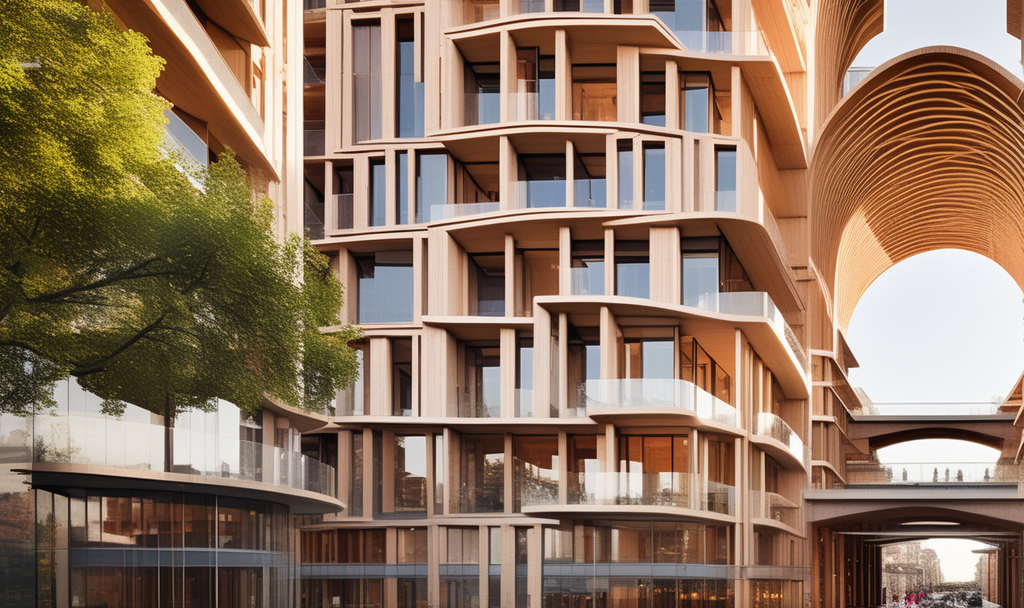Architecture is a dynamic field that reflects the values, beliefs, and identity of a society. The influence of culture on architectural design is profound, shaping the way buildings are conceived, constructed, and perceived. In this exploration, we delve into the intricate relationship between culture and architecture, uncovering how cultural nuances impact the design process and the built environment.
Understanding Cultural Influence
Architecture is not just about constructing buildings; it is a form of cultural expression. Cultures around the world have unique histories, traditions, and aesthetics that find manifestation in the structures they create. From the towering pagodas of Asia to the intricate mosques of the Middle East, each architectural marvel is a testament to the cultural values embedded in its design.
The design of a structure is a visual language that communicates the identity of a community. It encapsulates the way people interact with their environment, addressing both practical needs and cultural aspirations. The influence of culture is evident in architectural styles, materials used, and even the spatial arrangements within buildings.
Cultural Diversity in Architectural Styles
The global landscape is a tapestry of diverse architectural styles, each telling a story of its cultural roots. Consider the contrast between the sleek, modern skyscrapers of New York City and the ancient temples of Kyoto. The architectural language speaks volumes about the values and priorities of the societies that produce them.
Materials as Cultural Signifiers
Materials used in architecture are not merely functional; they are carriers of cultural symbolism. For instance, the use of red brick in colonial-style buildings harks back to European influences, while adobe structures in the American Southwest reflect Native American traditions. The choice of materials is a deliberate decision that ties a building to its cultural context.
Cultural Influences in Contemporary Architecture
In the contemporary architectural landscape, the interplay of cultures is more pronounced than ever. Globalization has facilitated the exchange of ideas and styles, resulting in a fusion of cultural influences. Architects today draw inspiration from various traditions, creating structures that are a synthesis of diverse cultural elements.
The Impact of Cultural Context on Spatial Design
Beyond the aesthetic appeal, culture profoundly influences the spatial design of buildings. Cultural norms dictate how spaces are utilized, defining the relationships between public and private areas. For example, traditional Japanese homes often feature sliding doors and open floor plans, emphasizing a connection with nature and communal living.
Challenges in Cross-Cultural Architectural Design
While cultural influences enrich architectural diversity, they also pose challenges, particularly in cross-cultural design projects. Architects must navigate the delicate balance between preserving cultural authenticity and meeting the functional requirements of the intended space. Striking this equilibrium requires a deep understanding of the cultural nuances at play.
Sustainable Design and Cultural Sensitivity
In the era of sustainable design, architects are increasingly recognizing the importance of cultural sensitivity. Building designs that respect and integrate with local cultures are more likely to be accepted and sustainable in the long run. Incorporating traditional building methods, materials, and energy-efficient practices aligns with the values of the community and ensures the longevity of the structure.
The Role of Architects in Preserving Cultural Heritage
Architects play a crucial role in preserving cultural heritage through their work. Whether restoring historical landmarks or designing new structures, architects must consider the cultural context to ensure the continuity of a community’s identity. Preservation efforts often involve a delicate dance between modern needs and the preservation of historical authenticity.
If you have any question about this article, please contact us …
If you want you can know more about this through Cambridge dictionary.
Conclusion
In conclusion, the influence of culture on architectural design is undeniable. From ancient civilizations to the contemporary globalized world, culture shapes the way we build and inhabit spaces. As architects continue to navigate the complexities of cultural diversity, the challenge lies in creating designs that honor traditions while embracing the ever-evolving nature of architectural expression. By understanding and respecting cultural influences, architects can contribute to the creation of a built environment that reflects the rich tapestry of human experience.

